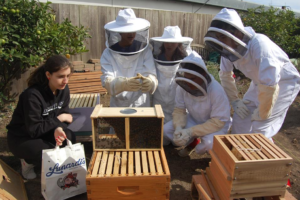On a fall Monday, the Lick varsity soccer team was practicing defending free kicks. As the ball was kicked to the goal, Loic Marcon ’17, the defensive-mid, jumped into the air to block the shot. He aimed to block the ball with his forehead (the hard part of his skull), but as he was in flight, the ball took a sharp curve and slammed into the soft top of his head. Waving it off as nothing, Loic nonchalantly finished his practice.
Tuesday and Wednesday went all right, he thought, but Loic started to feel weird on Thursday. His day was marked by a terrible headache, and he received a bad grade on a math test he had taken Tuesday, although he studied hard for it. The headache persisted until Friday, when his symptoms were supplemented by nausea and pain caused by bright lights. Loic finally went to a doctor, where he was diagnosed with a mild concussion.
Loic’s story is not rare among student athletes; this year a number of students have suffered from concussions. These head trauma injuries are distinct from other injuries that plague Lick athletes because they can impact their performance in school.
Fortunately for Loic, his symptoms were brief and relatively minor. This is not always the case with students who suffer from concussions; take Dylan Drummer ’17, who was concussed during a Lick baseball practice last season.
“I was playing catcher,” he recalls. “The pitcher threw a ball that landed in the dirt. I propped myself up to block the ball with my body. As I did that…the batter swung and hit me in the head.”
Even though his ears were ringing and he felt “confused,” Dylan played for two more batters before taking a seat. When he tried to work on homework that night, he couldn’t focus on the work.
During a debate in English class the next day, Dylan said his heart beat abnormally fast whenever it was his turn to speak.
Throughout that week, Dylan also couldn’t look at computer screens, which he said impacted his ability to perform in class.
Dylan’s concussion significantly impacted him. Because of his inability to focus and his impaired vision, Dylan’s grades suffered, particularly in math. Even though he took little time off during the span of his symptoms (between two and three weeks), Dylan still had to reteach himself an entire math unit because of his inability to learn.
Lick students who suffer from concussions do not only suffer in classes. Although concussions do not have any visible manifestations like other injuries, they can take players out for a season.
Take Kevin Hou ’16 and Christian Tyler Rydeen ’16, both seniors on Lick’s Varsity Basketball Team. Both suffered concussions halfway through the season. Due to concussion protocol, they were benched for most of the rest of the season. According to both of them, it was devastating to not be able to play. Each, however, did get back on the court — for a farewell to high school basketball.

photo by Barre Fong
While there seems to be an apparent spike in concussions in Lick athletes, as Winifred Montgomery, Lick’s Learning Strategies Teacher explains, there has not been an increase in concussions, but rather an increase in awareness of concussions.
Montgomery emphasizes that you can’t just power through concussions. “Trying to learn with a concussion is like trying to exercise with a damaged muscle,” she says.
Montgomery explains that concussions can give students a “temporary learning difference.” As a result, Montgomery and Dean Oscar King have been working together to establish a firm, comprehensive set of guidelines for students.
In addition to setting up guidelines for students who suffer from concussions, the Athletics Department is also taking steps to recognize concussions and mitigate further injury. Athletes in physical sports now take the ImPACT test prior to a season to measure their baseline brain activity. The ImPACT test, is a non-intrusive test taken on a computer, and is sort of like a videogame. The test results (210 current students have been tested) are stored by the Athletics Department. After experiencing a concussion, the student then retakes the test to measure their current brain activity. This helps determine the severity of the concussion and can help determine the expectations and guidelines for the student both athletically and academically.
As of now, there do not exist options for preventing concussions. However, it is possible to prepare for them, and to respond appropriately when they happen. Lick has done both, and will continue to do both.







